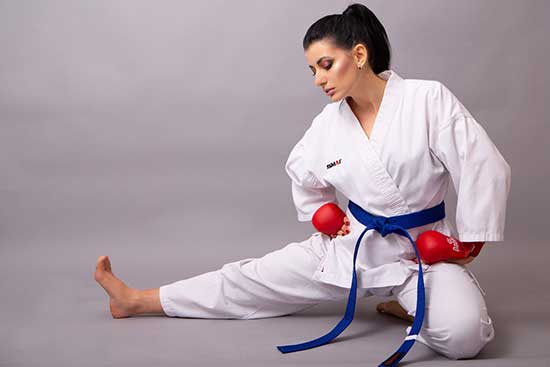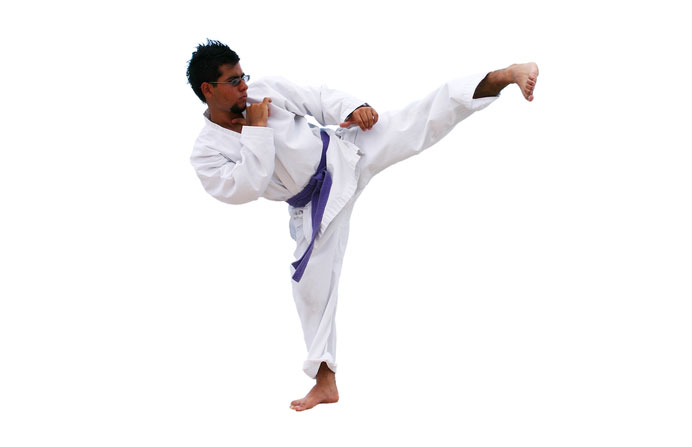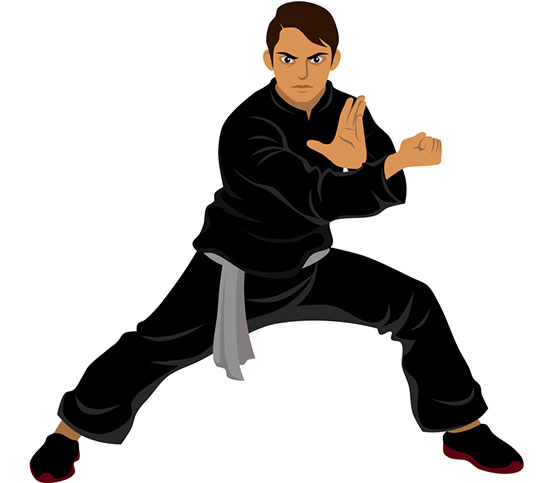Hapkido and Krav Maga are two popular forms of martial arts that display a focus on the learning of techniques for both defense and offense.
The techniques utilized in these martial art forms feature a combination of movement patterns that are original, as well as those that are derived from other fighting forms.
Nevertheless, in spite of their common features, Hapkido and Krav Maga have clear distinctions with reference to their origins, techniques, and applicability in real-world situations.
Hapkido is a collective combination of traditional Daito Ryu and Taekwondo Korean martial art forms. Its system is built upon a foundation that revolves around the water principle, circular movement, and force redirection.
The physical application of these principles occurs through the utilization of weapons, punches, wrist locks, and kicks for the purpose of opponent overwhelming or deflection.
Comparatively, Krav Maga is a system of self-defense whose development during the conclusion of the Second World War can be credited to Imi Lichtenfeld.
This martial art form was developed for efficient real-world use by the Israeli military. Krav Maga features a rich combination of wrestling, karate, aikido, boxing, and judo techniques for oppositional and defensive applications.
Contents
Benefits of Hapkido
- Accessibility is a major benefit of Hapkido on the basis of its global applicability regardless of gender, age, or weight. This style incorporates circular and linear techniques that allow for a commendable level of flexibility in the handling of a wide range of situations that are confrontational.
- Hapkido is also greatly beneficial to the development of an effective self-defense system that incorporates more than 3000 specialized defensive and offensive techniques and actions.
- In addition to self-defense, Hapkido also plays a significant role in the overall improvement of physical fitness, through the use of regular exercise and systematic training. In turn, this results in healthy body weight achievement, muscle mass growth, and muscle tone development.
- Good mental health is essential in the effective practice of Hapkido. As such, this martial art form facilitates the development of mental self-control and discipline, which in turn translates to improved mental health.
Disadvantages of Hapkido
- One of the major disadvantages of Hapkido is its distinct lack of training in situational awareness within major curriculums. This implies that practitioners lack skill in environmental threat detection unless situational awareness is consciously added into more specialized curriculum forms of this discipline.
- Hapkido techniques have low striking speed and power, which makes it easy to encounter counterattacks from opponents.
- Martial art forms generally feature techniques that have a degree of real-world applicability. However, Hapkido techniques are often complex and unrealistic in their practical application.
- In addition to the unrealistic application, this discipline offers no realistic training with weapons, thus making it hard to disarm armed attackers.
- Although real-world situations often call for the use of foul tactics in order to gain an advantage over attackers, Hapkido fighting styles have zero tolerance for such tactics. This is highly disadvantageous when facing opponents who employ foul tactics.
Krav Maga Advantages
- Krav Maga features the use of combative techniques such as eye gouges, kicks, and punches, as well as elbow and knee strikes for efficient self-defense and attacker neutralization.
- Since this discipline upholds the need for self-defense, no technique is considered illegal or foul, thus providing a level of advantage in real-world scenarios.
- The military origin of Krav Maga, as well as its focus on survival, leads to the development of a keen sense of situational awareness for effective attack and defense.
- Additionally, the techniques used in this discipline have an overall positive effect on physical fitness through their facilitation of increased strength and muscle tone.
- Krav Maga also encourages the development of mental resilience and strength for the efficacious handling of challenges under high pressure.
Disadvantages of Krav Maga
- Although Krav Maga involves meticulous planning and implementation of technique combinations for various situations, its training does not involve actual exposure to real-world situations.
- Due to the basis of this discipline on fighting scenarios that mimic the real world, as well as the lack of rules and regulations, the determination of individual skill levels through competitions is difficult. In turn, this inability to participate in competitions makes it difficult to track individual skill progression.
- Generally, Krav Maga focuses on defensive and offensive preparation for a wide variety of scenarios. Consequently, this leads to a clear lack of specialization in specific techniques that would be more useful in certain situations.
Differences between Krav Maga and Hapkido
- Although Krav Maga revolves around the efficient use of speed and strength for defense and offense, the techniques in Hapkido forego speed and strength in favor of anatomical knowledge, leverage, and momentum for defense.
- Whereas Hapkido shows no tolerance for foul tactics, Krav Maga’s focus on survival encourages self-preservation through the use of tactics that would otherwise be considered illegal or foul in other martial art forms.
- In contrast to Hapkido’s lack of training in situational awareness, Krav Maga’s military background encourages the development of a strong sense of awareness and threat anticipation within highly stressful situations.
- In terms of accessibility, while Hapkido is widely accessible worldwide, Krav Maga is only offered in a select few establishments. The relative global inaccessibility of Krav Maga is caused by the need for highly qualified trainers for its specialized tactics.
| Krav Maga | Combat Hapkido |
|---|---|
| Developed for military and self-defense | Developed for law enforcement and self-defense |
| Focuses on efficient and brutal counter-attacks | Focuses on fluid and circular movements |
| Emphasizes aggression and finishing the fight quickly | Emphasizes control and restraint |
| Uses a wide variety of techniques from various martial arts | Draws primarily from Hapkido, but also incorporates techniques from other martial arts |
| Has a strong emphasis on weapon defense | Has a strong emphasis on joint locks and throws |
Similarities between Krav Maga and Hapkido
- Both forms of martial arts revolve around the utilization of a wide variety of techniques for effective self-defense against perceived threats. As such, they both enhance overall survivability in perilous situations.
- In addition to self-defense, both disciplines significantly contribute to mental resilience and strength. In this case, mental enhancement stems from the need for discipline in the learning, performance, and mastering of the various fighting forms and techniques involved in both martial art forms.
- Both forms of martial arts greatly contribute to the improvement of physical health. Essentially, this results from the physical nature of the techniques utilized in both disciplines, which immensely facilitate not only the advancement of strength and muscle tone but also the achievement and maintenance of healthy weight.
Closing thoughts
Although Hapkido and Krav Maga have clear differences in terms of historical origin and technique, the very essence of their establishment is based on the concept of personal safety.
Additionally, when correctly practiced, these two forms of martial art have astounding short and long-term physical and mental benefits.
Ultimately, the receipt of training from highly qualified personnel is key to reaping all the vital benefits of both Hapkido and Krav Maga.





